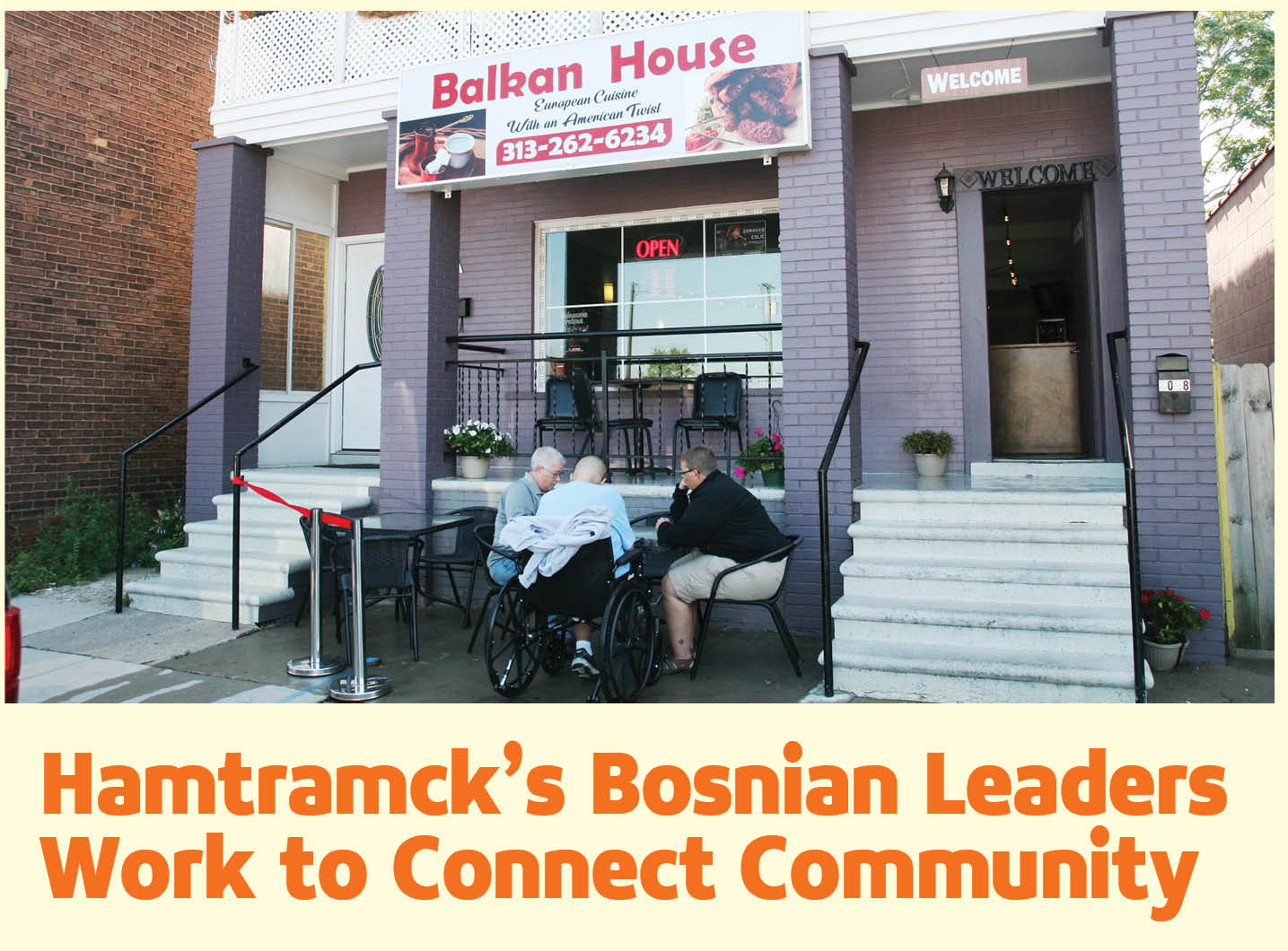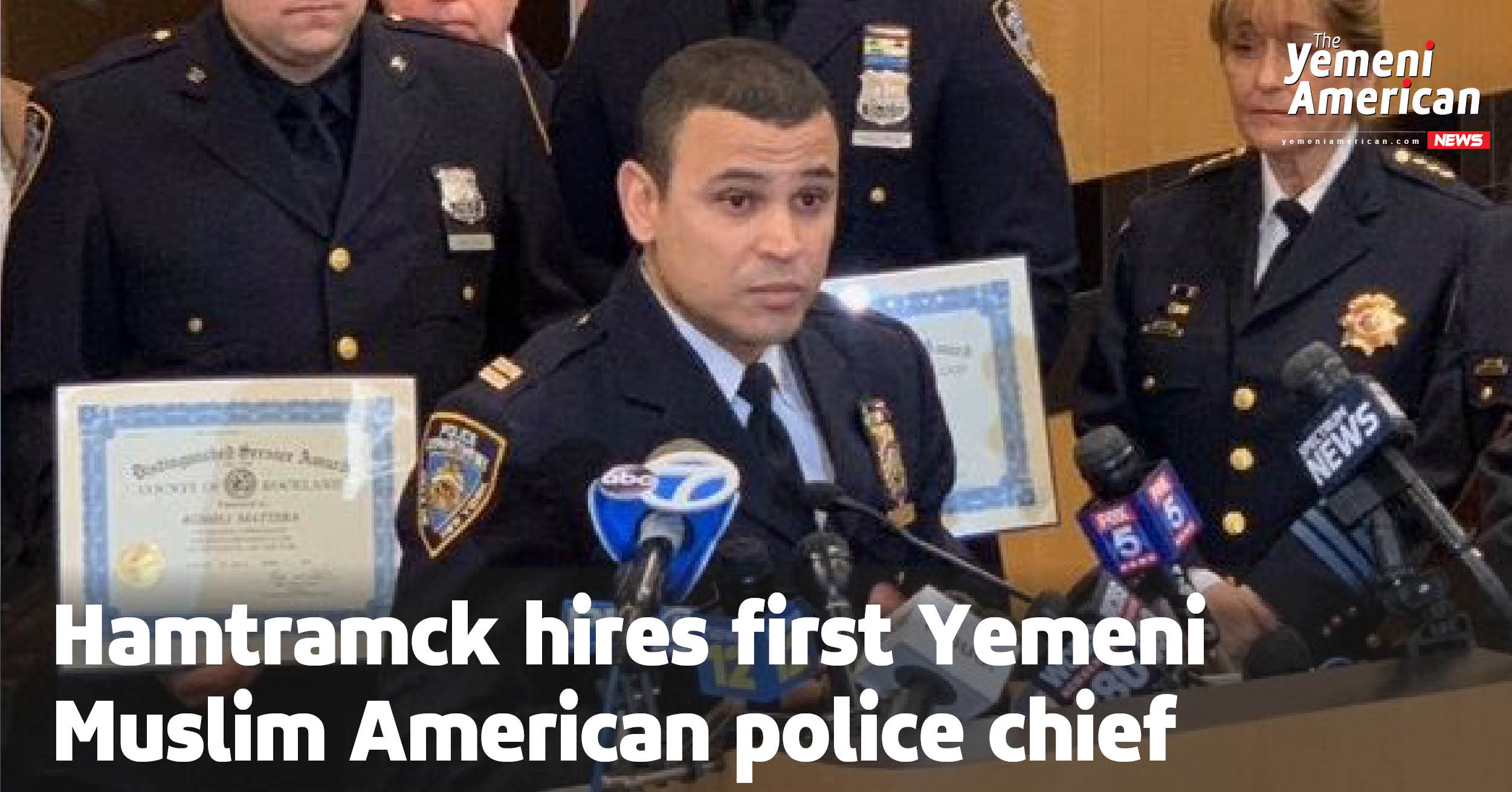By Simon Albaugh – YAN
It’s a house like any other in the neighborhood. From Caniff Street, you can see the beautiful façade with its inviting chairs on the porch. But after you walk beneath the sign and through the heavy front door, you truly feel like you’re walking back into an Eastern European home.
Inside, you’re the guest to a reconstruction out of the faded memories of Bosnia, where the owner lived before becoming a refugee in Central Europe. These memories, along with the handful of places on the owner’s journey through life, inspired the look and taste of Balkan House.
Only five months old, it’s found a good measure of success in the crowded restaurant industry of Hamtramck. Owned by Juma Ekic, it’s just one of the many iterations of Bosnian Culture throughout the “World in two square miles.”
Bosnian immigrants became part of the Hamtramck demographic starting in 1992. When the war that broke up the former Yugoslavia terrorized the fledgling Balkan states, Bosnian Muslims had to escape after atrocities committed by the Republika Srpska amounted to acts of genocide.
Most Bosnian-Americans came to the United States after the war as refugees, many having lost family to the conflict.
“I was twelve years old when I left from Bosnia,” Ekic said. “They made us leave. I lost a brother, who was only twelve years old.”
Bosnian populations contribute to many cities around the country. Most Bosnian-Americans now live in St. Louis, Missouri, with Chicago, Jacksonville, New York City and Metro-Detroit having the next-largest communities.
Today, there are around 2,000 Bosnian-Americans living within Hamtramck’s borders. With multiple religious centers in the city, and a series of cultural organizations around Southeast Michigan, Bosnian-Americans have created a home in the wake of war.
Arif Huskic is one of the many Bosnian-Americans who moved to Hamtramck after the war. He’s a member of the Bosnian Islamic Center in Hamtramck and was educated in institutions across the United States.
In the first three months he lived in the city, he learned English quickly enough to speak at city council meetings. For 22 years, he’s worked with the fervor of a community activist to help people throughout the city to connect with one another. Starting with Block Clubs, Huskic organized the neighbors around Hamtramck to help the people feel safer.
As leader of the Hamtramck Block Club Association, he organized clean-ups and mowing vacant lots, among many other things. And during a time when crime in Hamtramck, he helped to foster a better relationship between the residents and the police, something that strengthened response times.
But Huskic didn’t see this as doing enough. Starting in 2010, his work shifted to establishing Interfaith dialogues throughout the city.
“We need to cooperate for a better tomorrow’s existence and for our children,” Huskic said.
With the blessing of the city’s government, he began meeting religious community leaders throughout the city. But getting them to meet together was a different effort.
“I said ‘god please help me,” Huskic said. “’I’m on your test and please test these people to come,’ and they came!”
In a meeting with leaders from 20 different Mosques and Churches throughout the city, the Common Word Alliance, Clergy Interfaith Organization was formed.
In its ten years of work, the Common Word Alliance has doubled in size. With its cooperative focus, the efforts became an occasion for people to work together under the banner of a united community.
In the future, Common Word Alliance’s goals involve a training program for people among Hamtramck’s religious communities to enter skilled trades.
In the Balkan House restaurant, Juma Ekic is working to bring people together through the food that she and her staff make. Serving a variety of Bosnian dishes, along with some American foods, she has found success in working to serve the diverse community.
Only open for five months, the restaurant has become a mainstay in the food of the city. Ekic says that her everyday lunch rush and vibrant success was due to her efforts to fit her restaurant to the community, rather than expect the community to fit around Bosnian culture.
All of this is for the purpose of bringing people into a new culture and way of seeing the world. In Hamtramck’s diverse array of communities, an open mind and an empty stomach can connect people.
“When you talk about different kinds of people and different culture, food brings people together,” Ekic said. “Like, I love to eat Bengali food. I love Arabic food.”
Ekic’s philosophy is that enjoying a culture’s food can be a way to become interested in different ways of life. And in the vastly diverse cultures around Hamtramck, people can become interested the world around them.












